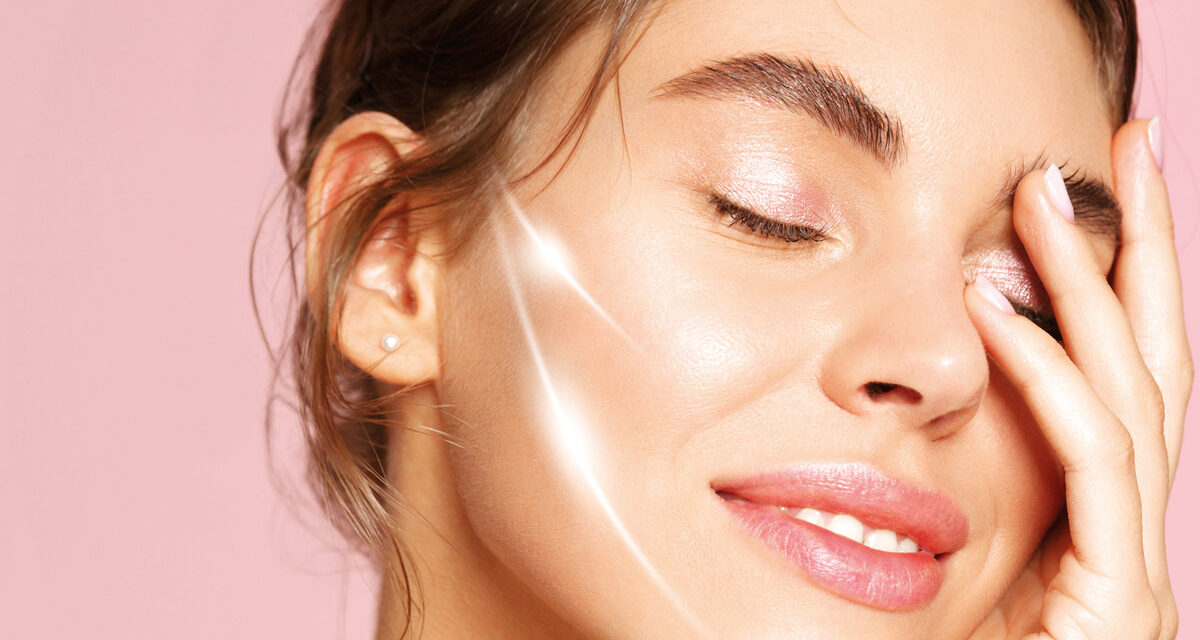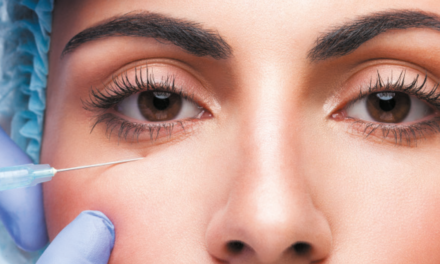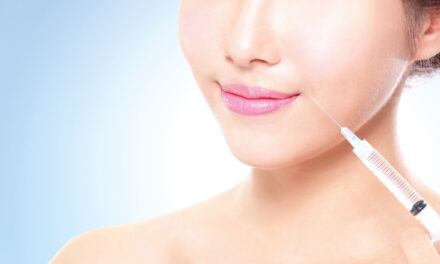Albina Kajaia describes the results from her 12-month study on the effects of the fourth-generation of Aptos threads
The process of facial ageing manifests as structural deformities to the skin and hypodermis1. Primary visual markers of facial ageing, such as wrinkle formation, sagging of facial soft tissue, and distortion of the oval contour, are more sharply expressed in the middle zone of the face2. Midface rejuvenation is a developing field in aesthetic medicine, and there is great patient demand for minimally invasive treatments to have a short recovery period, quicker functioning time and long-lasting satisfactory results3.
Nowadays, in the majority of cases, aesthetic treatments are combined with other procedures to obtain the desirable rejuvenating effects, such as eliminating sagging skin through mechanical lifting and repositioning of skin and subcutaneous tissue, as well as skin quality improvement. For such goals, aesthetic practitioners can combine thread lifting and hyaluronic acid injections. Face-lifting with barbed threads has been gaining popularity in recent years. Various face-lifting threads are currently present on the market. Polydioxanone (PDO) threads, poly-L-lactic acid (PLLA) threads, and PLLA/polycaprolactone (PLC) threads are predominantly used. New generations of threads are thought to reduce side effects, extend the functioning time, improve satisfaction, and promote skin surface reparation4,5. Threads developed by Aptos (Aptos LLC, Georgia) are composed of the copolymer poly-L-lactic acid (PLLA) and polycaprolactone (PCL), providing this product — P(LA/CL) — with a long-lasting biostimulating effect through the slow and gradual release of PLLA, which is a potent stimulator of collagen production (Figure 1)5,6. As a result, the patient not only experiences an instant improvement in the shape of their face but also a faster rejuvenating and long-lasting biostimulation effect with thicker, glowing skin.
In parallel to facelifting, the application of dermal fillers is becoming increasingly popular for skin rejuvenation purposes. Hyaluronic acid (HA) is known to be involved in primary biological functions, such as regulating cell adhesion and motility, manipulating cell differentiation, and cell proliferation and degrading as the body ages. HA-based fillers have launched quickly and widely because of their biocompatibility, non-teratogenicity, safety, durability, ease of application, and good cost/benefit ratio.
Due to its hydration and bio-stimulative effect, hyaluronic acid injections are widely used in aesthetic medicine for skin rejuvenation purposes. However, there are challenges that are faced in aesthetic medicine for hyaluronic acid treatment methods. In vivo, HA is rapidly degraded by enzymes and radicals that exist in the human body7. HA in dermal fillers must, therefore, be modified to increase its resistance to degradation once injected8. The modification includes cross-linking HA polymers — chemically stabilising the HA molecules. The cross-linking prevents it from degrading too quickly. However, the chemical stabilisation of HA molecules has its disadvantages and causes complications in HA injections9.
Both non-cross-linked and cross-linked HA-fillers have been utilised in aesthetic centres. Nevertheless, hygroscopicity and overall effectiveness are more apparent in unstabilised, i.e. non-cross-linked molecules of HA10.
Recently, Aptos LLC has introduced a new generation of threads in which P(LA/CL) copolymer threads are surrounded in a coating of unstabilised (non-cross-linked) HA molecules encapsulated in a P(LA/CL) copolymer shell embedded in the net of P(LA/CL) nanofibres around the core P(LA/CL) monofilament thread. This technology, named NAMICA (NAnoMIcroCApsules), is believed to provide long-lasting skin rejuvenation and tissue lifting. The goal of this study was to evaluate the 12-month rejuvenating, skin quality improvement and midface lifting effects of Aptos threads produced with NAMICA technology.
Patients and methods
Twenty-six subjects undergoing midface thread lifting procedures in the Total Charm Vake aesthetic clinic, Tbilisi, Georgia, from April 2022 to December 2022, were involved in this prospective study. The study was carried out in accordance with the guidelines laid down in the Declaration of Helsinki and the study protocol approved by the local Ethics committee. Informed consent was obtained from every study subject. The selected patients had facial ageing graded between 10–100 points according to the visual scales. All included patients had Fitzpatrick skin phototype I–VI. The age of the women and men included was 30–65 years. Exclusion criteria were any previous use of facial threads or previous facial aesthetic surgery, use of permanent fillers or hydroxylapatite fillers, pregnancy, allergy and autoimmune diseases, complicated chronic illnesses, and skin infections. Collected demographic data included age, gender, race, weight (kg), and height (m). Other baseline/screening data included general medical history.
Treatment technique
After clinical examination, all patients underwent a thread-lifting procedure in accordance with the Manufacturer’s Instructions for Use. Five threads were applied to each half of the face (one package of the product containing 10 threads were used in total for one patient) with the entry point on the line from the lateral canthus to the tragus at 1–1.5 cm from the hairline. This point will be in the projection of a cluster of strong fibrous cords linked with the periosteum of the zygomatic arch.
Once the areas to be treated were disinfected and cleaned with an antiseptic solution, local anaesthesia was applied. Ana-esthesia was performed symmetrically on each side of the face.
Next, entry points were injected with 1% lidocaine mixed with epinephrine. The skin was punctured so that an anaesthetic solution could infiltrate along the pre‑marked location for each thread placement. Subsequently, 190 mm of absorbable threads with multidirectional barbs comprised of P(LA/CL)-HA (NAMICA Technology) were pre-loaded into a 21G round tip cannula (Figure 2). Cannulas were pulled through so that the threads were placed in subcutaneous tissue. Both sides of the face were treated with five P(LA/CL)-HA threads, with three threads implanted in the midface area and two in the lower face area. Implanted threads were compressed, cannulas were removed, and the puncture was closed using a medical strip. Patients were provided with post-treatment recommendations.
Data assessment
Calibrated and stereoscopic images of the patients’ faces were acquired with a passive stereovision LifeViz Mini (Quantificare S.A., Biot, France) digital camera and its Quantificare 3D Viewer plus surface reconstruction and analysis. This equipment was used for skin quality parameters (wrinkles, evenness, oiliness, redness) and lifting level assessment. Skin quality parameter (wrinkles and evenness) measurement values using this method of assessment are scored from -10 to +10, for which -10 is the worst case (for example, for wrinkles, it is many deep wrinkles) to +10 is the best case (no wrinkles). Redness improvement was assessed blinded via visual assessment by physicians of images analyzed by LifeViz® software and compared post-procedure with baseline images. Lifting was measured in millimetres. All patients accepted the reproduction of their recognisable photographs.
Subject-reported outcomes were assessed using the validated FACE-Q questionnaires (satisfaction with the procedure, satisfaction with facial appearance, satisfaction with skin).
All patients were asked to complete the correspondent Face-Q patient-reported outcome questionnaire (FACE-Q© 2020 Memorial Sloan-Kettering Cancer Center, all rights reserved) at D0 and 4 months, 9 months, and 12 months after the procedure. The areas reported in the Face-Q questionnaire were satisfaction with facial appearance, skin, cheeks, and cheekbones; adverse effects: skin, cheeks, lower face and jawline; appraisal of lines: overall, nasolabial folds, and marionette.
GraphPad Prism software was applied for the statistical analyses. The chi-squared test was used to evaluate facial lift, and the Wilcoxon signed-rank test was employed to evaluate differences in the total mean surface area of facial lift. The scale questions were summed up based on the Face-Q recommendations. Differences at three time intervals were compared using the Wilcoxon signed-rank test. A p-value of less than 0.05 was considered statistically significant.
Results
Skin quality scores for wrinkles and evenness were improved significantly at each timepoint: 4, 9, and 12 months (Table 1). Wrinkles improved in 100% of patients (26) at 4 and 9 months and in 96.2% (24) at month 12. The mean baseline score for wrinkles was 0.3 and increased to 4.8 at month 4, 4.2 at month 9, and 3.8 at month 12 (Figure 3).
The mean baseline score for evenness was 1.15 and increased to 4.0 at month 4, 4.42 at month 9 and 5.46 at month 12 (Figure 4).
Redness improvement was assessed blinded by three evaluators and deemed improved in 100% (26) of patients at month 4, in 96.2% (25) at month 9, and in 92.6% (24) at 12 months.
Meaningful changes in facial lifting were effectively measured using 3D surface imaging techniques at 4, 9, and 12 months post-treatment, separately on the right and left side of the face. The lifting effect peaked at month 4 and was maintained to month 12.
Subject-reported outcomes were assessed using the validated FACE-Q questionnaire. Subjects completed the questionnaire at the time of enrollment and 4, 9, and 12 months post-treatment. Mean scores are based on a satisfaction scale: 1=very dissatisfied, 2=somewhat dissatisfied, 3=somewhat satisfied, and 4=very satisfied. All questions garnered scores between 3 (somewhat satisfied) and 4 (very satisfied) by all patients, and there were no significant differences between 4 months, 9 months, and 12 months, meaning that 100% of patients expressed meaningful satisfaction with the procedure through 12 months. It is worth noting that no adverse effects or undesirable symptoms were raised at any follow-ups.
Patients’ satisfaction with their facial appearance was analysed using scores for the symmetrical, balanced, well-proportioned, fresh and rested look, as well as morning and night-time satisfaction with their appearance, profile look, and appearance in photos. The scores were statistically significantly elevated at all follow-up time points (4, 9, and 12 months) compared to the baseline and remained consistent through 12 months.
Importantly, the skin rejuvenation effect is the added value of a P(LA/CL)-HA facelift. Evaluation of patients’ satisfaction with their skin appearance was high at all follow-up time points (Figures 5, 6, 7).
The results for the Face Q scores for satisfaction with the procedure showed that 100% of patients were pleased with the results at all time points by 12 months. The results were great for 92.31% of patients at 4 months and 100% at 9 and 12 months. The results for Face Q scores for satisfaction with their skin showed 100% of patients were very satisfied at 4, 9, and 12 months for the following skin characteristics: skin appearance at the end of the day, skin refreshed appearance, skin smoothness, skin hydration, skin even coloured. Photographs of the patient before the procedure and 12 months after treatment with NAMICA are shown in Figure 8.
Discussion
The allure of human beauty is intricately linked to the state of one’s skin, with flawless skin emerging as a universally appreciated trait. Underscoring the significance of maintaining healthy and high-quality skin is a key focus in our discourse on aesthetic medicine.
Numerous studies emphasise the substantial influence of skin quality on emotional well-being, general quality of life, self-perception, and interpersonal relationships, highlighting the pivotal role of healthy skin in our narrative of well-being within the realm of aesthetic medicine. Data from this study supports the use of P(LA/CL)-HA threads produced with NAMICA technology to achieve and preserve a meaningful skin quality improvement combined with facial lifting and overall rejuvenating effect and patient satisfaction for a sufficient period of time post-treatment. In our study, all subjects were treated on the right and left side symmetrically, applying five threads per side: the first thread to the lower jaw on the border of the jowl fat compartment, the second thread to the projection of the mandibular cutaneous ligament, the third thread to the mouth angle, the fourth thread to the middle part of the nasolabial fold without crossing it, and the fifth to the nose alar angle.
While similar studies describe the treatment of patients with 3 to 4 sutures in the midface, accumulating evidence suggests that optimal results are achieved with a holistic approach that most often includes four sutures in the midface, one to two sutures in the jowls or jawline, and two sutures in the upper neck, per side. Various studies describe the implantation of up to eight sutures per side11-13. Therefore, the selection of an adequate number of sutures is critical for ensuring that there is sufficient support for repositioned tissue and abundant volumisation to provide facial recontouring.
Our data show significant improvement in skin quality and a lifting effect through the 12-month period, indicating tissue repositioning taking place around the treated area. Of importance, tissue repositioning and skin quality improvement have a crucial role along with hyperkinetic muscle relaxation, skin resurfacing, and tissue revolumisation to achieve a durable rejuvenating result. Most often, patient demand for skin quality improvement along with thread lifting is supported by their desire for greater facial recontouring together with rejuvenation that other treatment modalities such as fillers, toxins, or energy-based devices can provide. In our study, skin quality improvement was assessed based on score changes before and after the procedure. The amount of lift was calculated based on changes in the projection of the skin’s surface in comparison with the baseline projection, which is an important supplement to the subjective data from patient satisfaction scores for facial appearance, skin, and the procedure overall.
Our data, reporting the dynamics of skin quality parameters and face lifting up to 12 months post-treatment, provides important information for aesthetic practitioners about the window where retreatment might be considered. Importantly, some authors even suggest that there is no need for patients to lose the lifting effects completely; rather, additional sutures can be placed at certain timeframes to maintain and/or further improve results11.
P(LA/CL)-HA threads used in our study were demonstrated to provide facial skin quality improvement and facial lift preserved through the study duration of 12 months. It is also noteworthy that the procedure was well-tolerated in all studied subjects, and no adverse effects or undesirable symptoms were recorded at later follow-ups. In addition, the vast majority of subjects gave satisfactory responses to all questions, evaluating their satisfaction with the procedure. These findings suggest that the 4th generation of P(LA/CL)-HA threads with NAMICA technology is a unique, adaptable, safe, and minimally invasive approach for the combined result of skin quality improvement and tissue lifting and repositioning.
Besides skin quality improvement and face-lifting, assessing subject-reported outcomes revealed the meaningful rejuvenating effects from P(LA/CL)-HA threads. Patients have mostly provided ‘somewhat satisfied’ or ‘very satisfied’ responses to the questions measuring their satisfaction with their facial appearance and skin. As demonstrated by the range of various absorbable suspension sutures, they provide a unique result by repositioning, lifting and recontouring. The 4th generation of P(LA/CL)-HA threads demonstrated wrinkle and evenness improvement, along with the above-mentioned effects.
Consistent with the inclusion and exclusion criteria for this study, the ideal patient has strong bony projections and skin that is mobile and pliable and of sufficient thickness to avoid palpability of the sutures. However, most often, the patients have facial skin redundancy and visible nasolabial folds and/or marionette lines. These patients, although not ideal candidates, might still benefit from such treatment. Several reports strongly argue that the best aesthetic result is reached by combining fillers and threadlifting14-16. Other studies underline the benefits of either treatment depending on clinical indications and demands, while also suggesting avoiding the application of multiple procedures, each having notable side-effects and recovery period. The recent comparative study by El-Mesidy et al. evaluated the efficacy of filler injection vs. thread lifting, reporting statistically significant improvement in GAIS favouring the filler14. Importantly, however, an argument about the benefits of threads for patients desiring an oval, less wide face shape is also proven14. Now, with the 4th generation of P(LA/CL)-HA threads, the suspension suture technique can be easily considered as the method providing the combined effect of facelift and rejuvenation through skin quality improvement. Longer-scale studies with larger populations are warranted to better explore the elements of the combined effect of lifting and skin quality improvement.
Conclusions
NAMICA technology ensures meaningful facial rejuvenation expressed by a well-observed improvement in skin quality, mid and lower-face laxity, and patient satisfaction with the procedure for at least 12 months.
Declaration of interest None
Ethical Statement The study protocol and consent form used for the study were approved by the Ethics Committee of the Clinic of Plastic and Aesthetic Surgery and Cosmetology ‘Total Charm Vake’, Tbilisi, Georgia. Written consent to reproduce their recognisable photographs, use anonymised clinical data for analysis and consent for publication was obtained from every study subject.
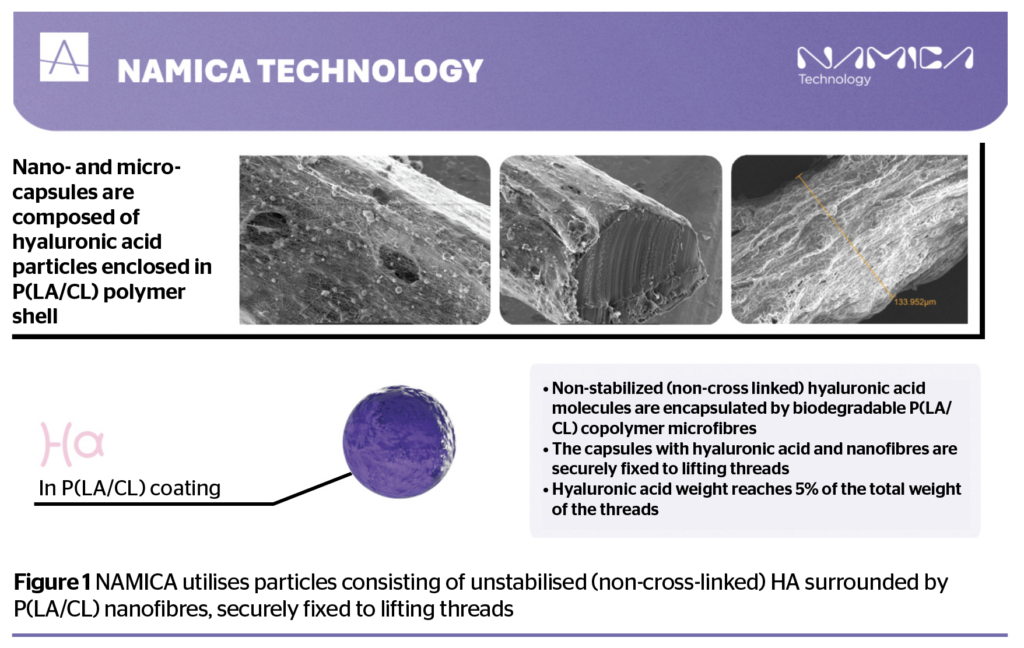
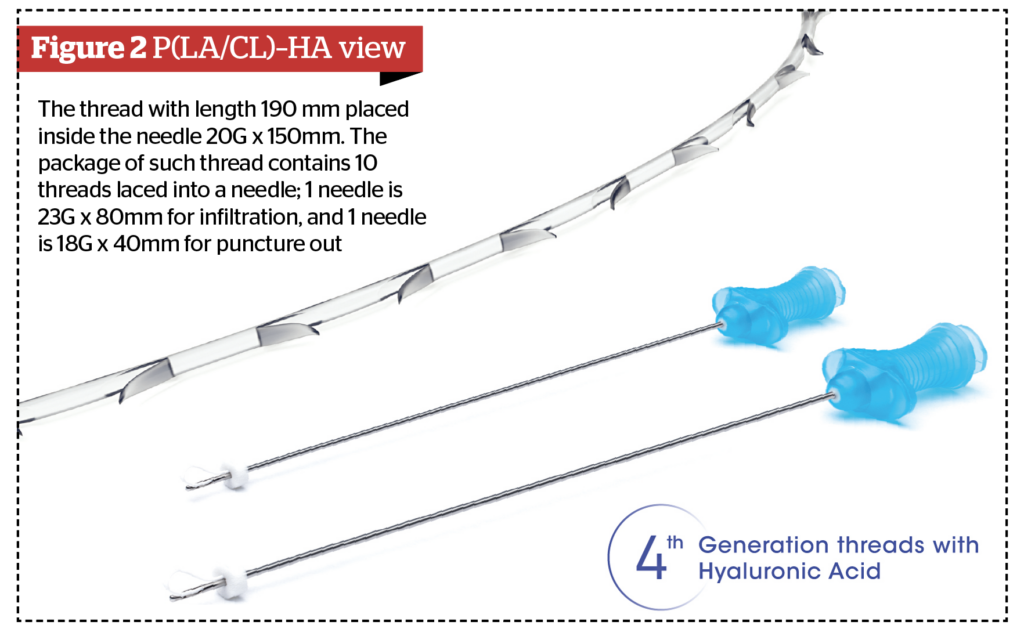

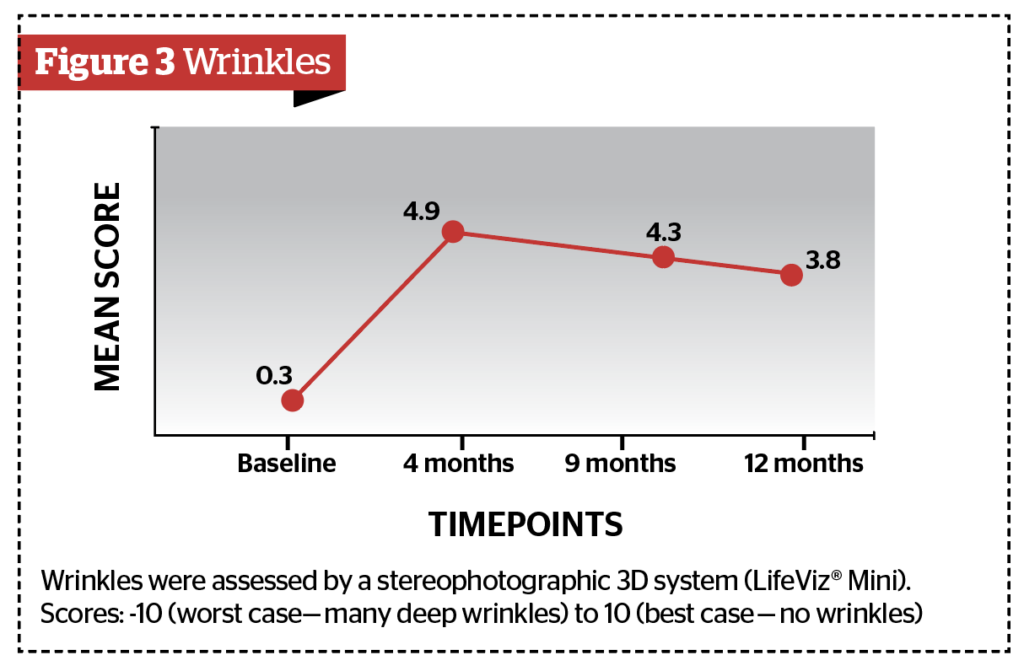
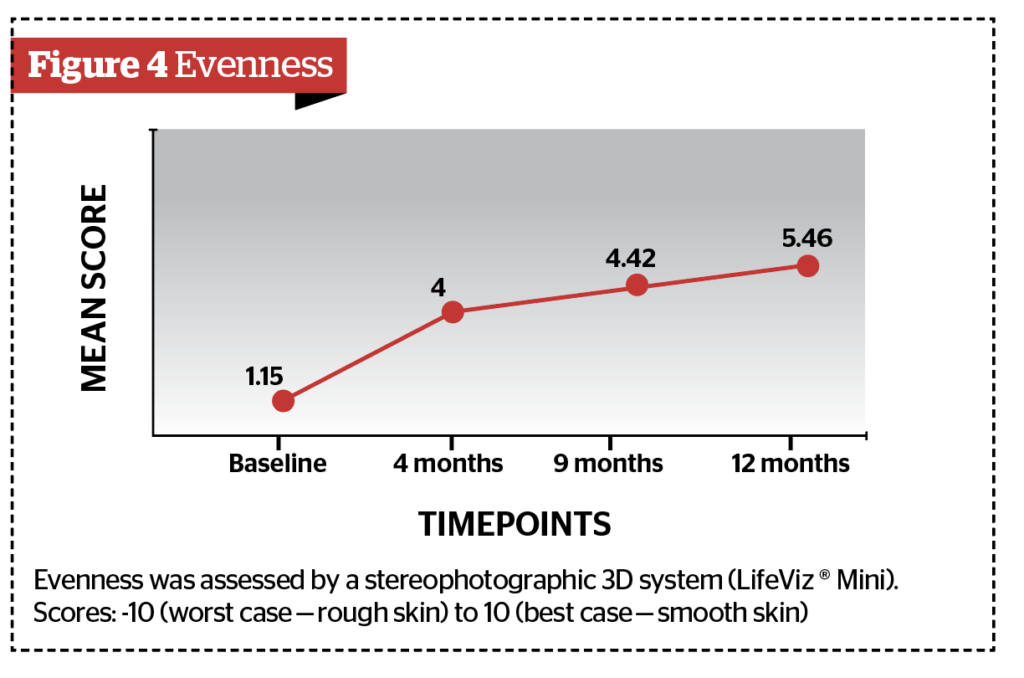
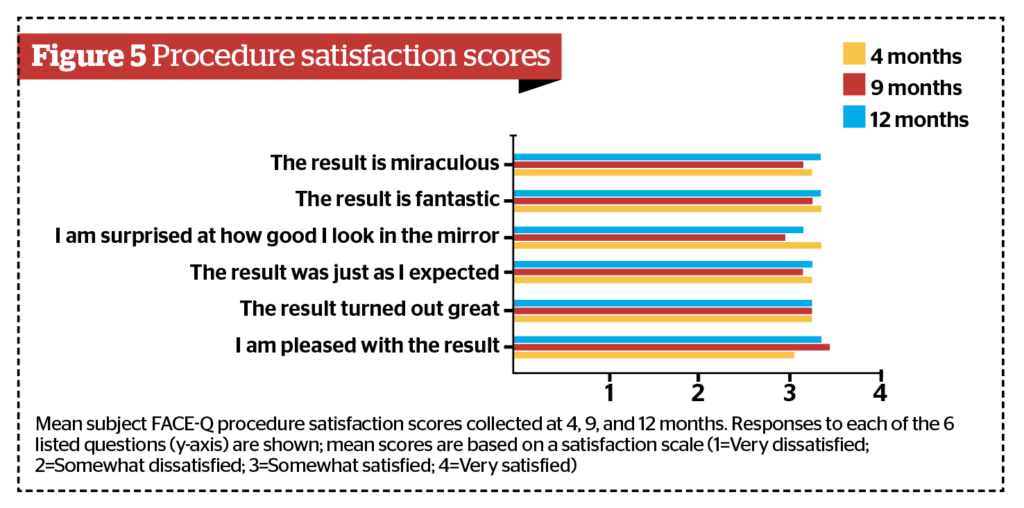
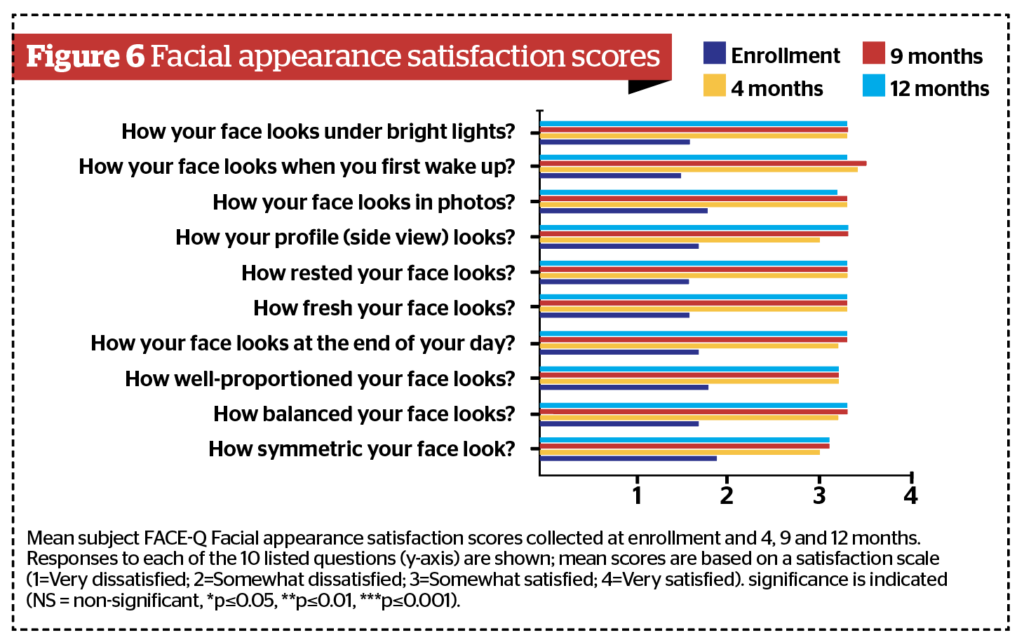
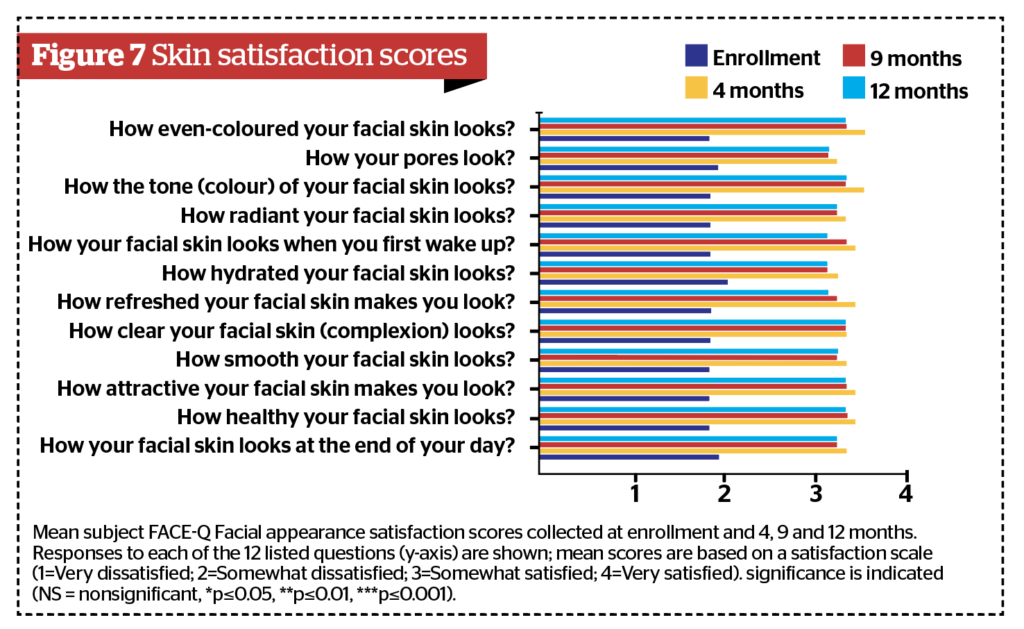
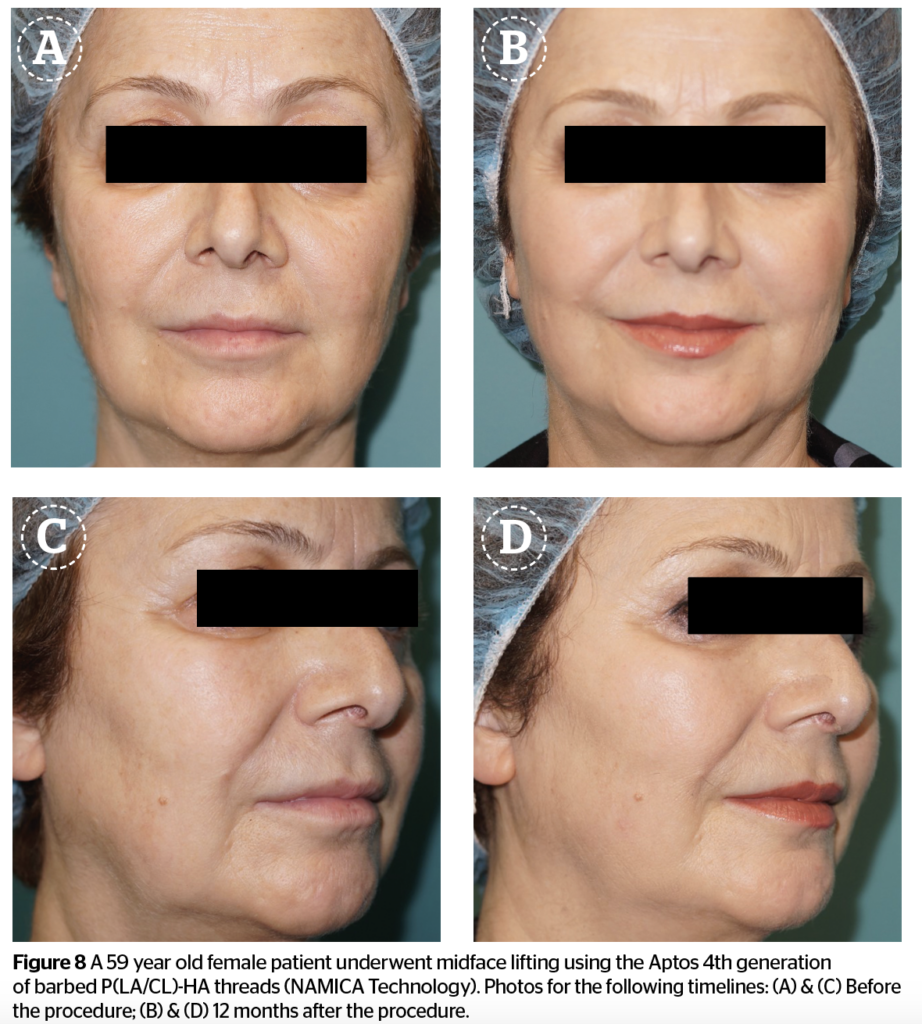
References
- Sulamanidze M, Sulamanidze G, Sulamanidze C. Elimination of Aesthetic Deformations of the Midface Area, Our Experience. Aesthetic Plast Surg 2018;42(3):774-90.
- Rezaee Khiabanloo S, Jebreili R, Aalipour E, Saljoughi N, Shahidi A. Outcomes in thread lift for face and neck: A study performed with Silhouette Soft and Promo Happy Lift double needle, innovative and classic techniques. J Cosmet Dermatol 2019;18(1):84-93.
- Ilankovan V. Erratum to: recent advances in face lift to achieve facial balance. J Maxillofac Oral Surg 2017;16(1):134.
- Aitzetmueller MM, Centeno Cerdas C, Nessbach P, et al. Polydioxanone Threads for Facial Rejuvenation: Analysis of Quality Variation in the Market. Plast Reconstr Surg 2019;144(6):1002e-9e.
- Sulamanidze GM, Sulamanidze MA, Sulamanidze KM, Kajaia AA, Giorgadze SG. The Subcutaneous Tissue Reaction on Poly (L-lactide-co-caprolactone) based Threads, Case Report. Int J Clin Exp Dermatol 2018; 3(2)1-9.
- Stein P, Vitavska O, Kind P, Hoppe W, Wieczorek H, Schurer NY. The biological basis for poly‐L‐lactic acid‐induced augmentation. J Dermatol Sci 2015;78(1):26-33.
- Park S, Park KY, Yeo IK. Investigation of the Degradation-Retarding Effect Caused by the Low Swelling Capacity of a Novel Hyaluronic Acid Filler Developed by Solid-Phase Crosslinking Technology. Ann Dermatol 2014;26(3):357–362.
- Tezel A, Fredrickson GH. The Science of Hyaluronic Acid Dermal Fillers. J Cosmet Laser Ther 2008;10(1):35-42.
- Fakhari A, Berkland C. Applications and Emerging Trends of Hyaluronic Acid in Tissue Engineering, as a Dermal Filler, and in Osteoarthritis Treatment. Acta Biomater 2013;9(7): 7081–7092.
- Da Costa A, Biccigo DGZ, de SouzaWeimann ET, et al. Durability of Three Different Types of Hyaluronic Acid Fillers in Skin: Are There Differences Among Biphasic, Monophasic Monodensified, and Monophasic Polydensified Products? Aesthet Surg J 2017;37(5):573-81.
- Nestor MS. Facial Lift and Patient Satisfaction Following Treatment with Absorbable Suspension Sutures: 12-Month Data from a Prospective, Masked, Controlled Clinical Study. J Clin Aesthet Dermatol 2019;12(3):18-26.
- Bohnert K, Dorizas A, Lorenc P, Sadick NS. Randomized, Controlled, Multicentered, Double-Blind Investigation of Injectable Poly-L-Lactic Acid for Improving Skin Quality. Dermatol Surg 2019;45(5):718-24.
- Kalyan R, Rafiq N, Wong V. The Efficacy of Polycaprolactone Threads in Zygomatic and Mandibular Lifting: Consecutive Study from a Single Practitioner’s Experience. Int J ClinExplDermatol 2017;1(1):1-3.
- El-Mesidy MS, Alaklouk WT, Azzam OA. Nasolabial fold correction through cheek volume loss restoration versus thread lifting: a comparative study. Arch Dermatol Res 2020;312(7):473-80.
- Tepavcevic B. Satisfaction of Patients and Surgeons with Combined Aptos Thread Lifting Treatment, Fat Grafting and Laser Treatment. Aesthetic Plast Surg 2022.
- Goel A, Rai K. Non-surgical facelift-by PDO threads and dermal filler: A case report. J Cosmet Dermatol. 2022;21(10):4241-4

